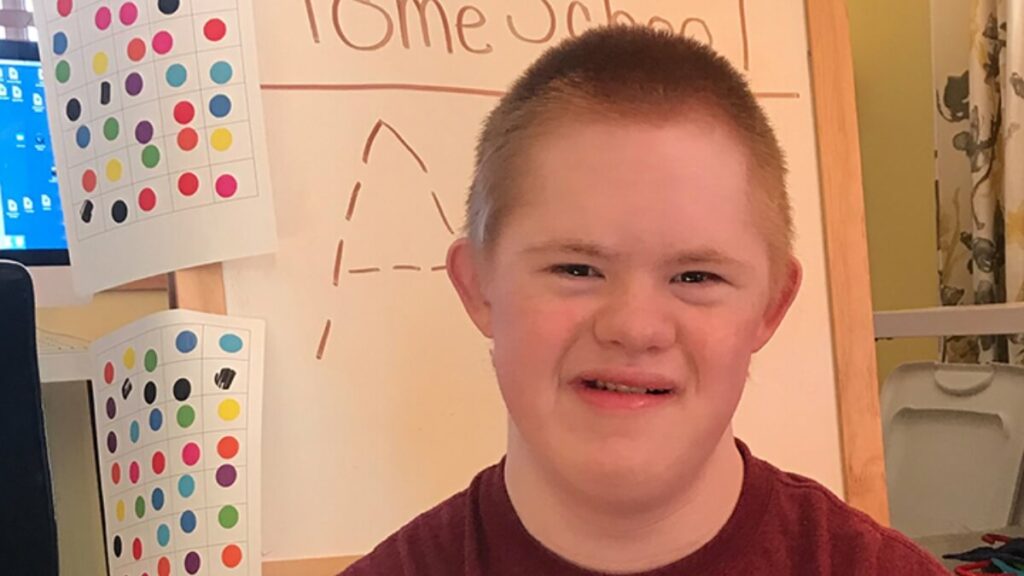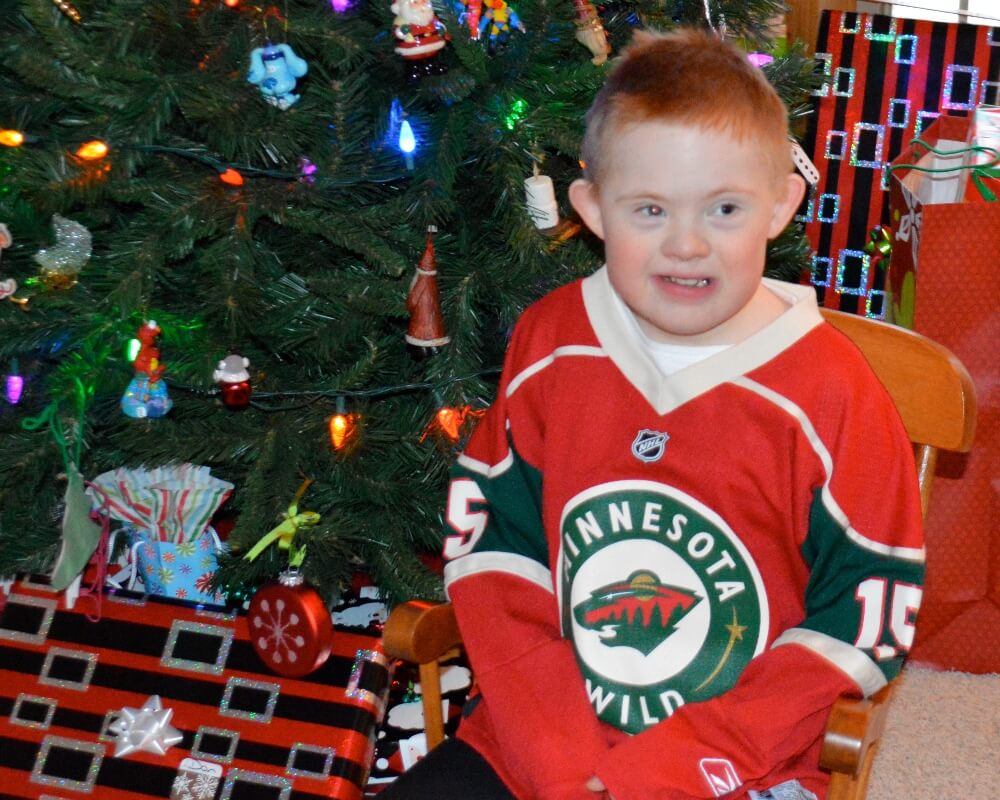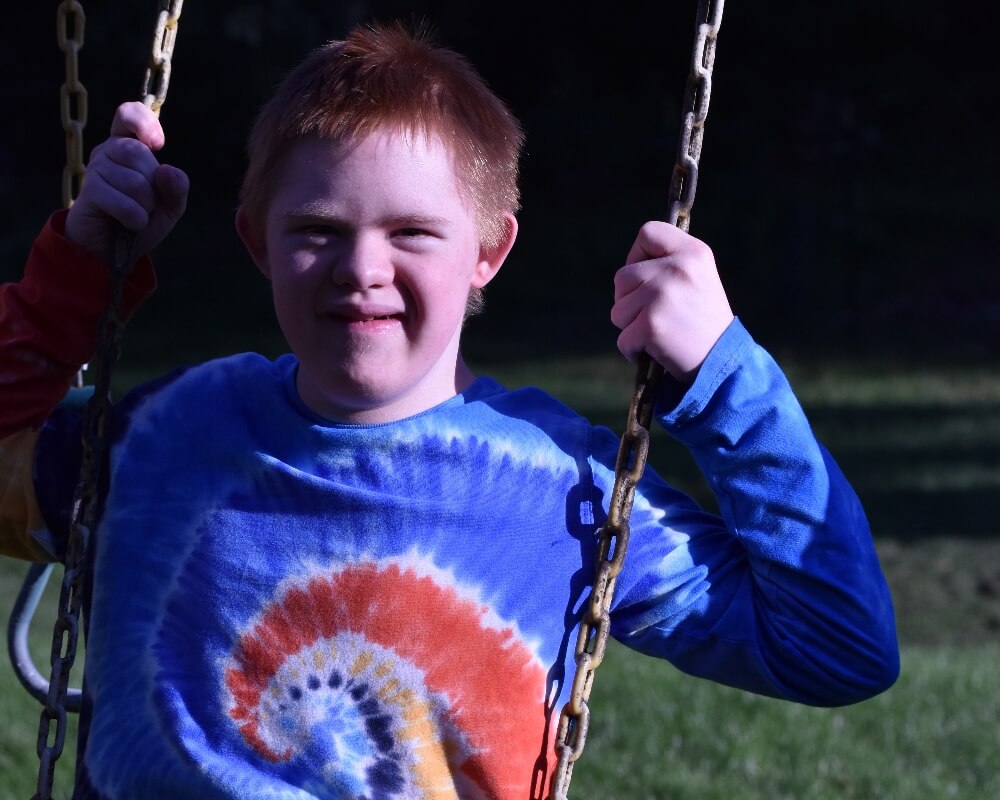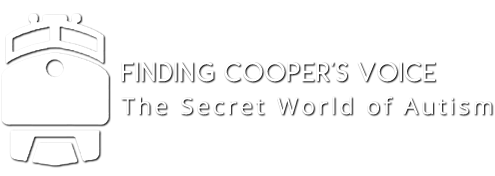DOWN SYNDROME & AUTISM: DUAL DIAGNOSIS

Fifth grade holiday concert. I found the perfect soft corduroy pants with a hidden elastic waistband and comfy red pullover that you will tolerate. We rehearsed the songs endlessly at home for weeks. You teacher assured me you have been practicing the song all week in the gymnasium and will have a para escorting you through the whole program.
We anxiously wait in the audience – a sea of parents with cellular cameras and camcorders rolling. Maybe I can get a good shot of you to put on the holiday card this year…
The lights dim. A spotlight hits the stage. I can see you in the back row – adorable.
The song starts. You cover your ears, rock your body, search the audience with wide eyes.
The para helps a little, but you are lost.
I am horrified.
What have I gotten you into? I should have known. How do I fix this?
You push through three songs and cling to the para as your grade exits the stage.
The audience claps and cheers.
I tremble, slip away to find you. To comfort you. To make you feel safe.
No snapshot for the Christmas card.
It’s obvious your peers with Down Syndrome were passing you academically and socially. You’re nonverbal, don’t raise your hand in class, and are known to drop down on the floor shout “UH UH UH UH,” to protest.
The teachers and doctors all assured me that it would be futile to seek a further diagnosis. I listened to the experts say, “Yeah. There might be something else going on besides Down Syndrome, but he’s already getting services to fit his behaviors, so any further diagnosis wouldn’t be beneficial.”
Wrong.
I (again) furiously surf the internet for answers… ideas… anything.
I Google symptoms of autism. Sure, he has some of the symptoms, but lots of kids have one or two of them. So, what then? Double up on speech and occupational therapy?
Then I had a lunch that changed my life.
At a friend’s suggestion I applied for admission into the Partners in Policymaking Program in my state. I had little hope, but was literally trying everything I could think of to figure things out.

I arrived to the first meeting wearing my standard emotional suite of armor. It comes in the form of an inviting smile, but consists of a thousand tiny scars of rejection, isolation, heartbreak, worry, and disappointment. It tells everyone I am confident and accessible, but I’m truly vulnerable and scared.
During our first lunch break I am sitting at a round table with about twelve other people – parents and self-advocates. Some moms shared stories of how their kids with Autism were behaving and how it prevented them from being able to get together with other typical kids.
Walking in circles.
Focusing on special toys instead of peers.
Being unable to go to restaurants or walk through stores without meltdown.
Never tolerating a change in routine.
Playdates with typical kids turned into disasters.
We all ached for the simplicity other parents had of grabbing a coffee with friends – or even sipping wine – while the kids just play freely.
I’m pretty sure that’s when I first noticed Kate – Coop’s mom. She looked around, and just casually said, “Wow. You guys just get it.”
For the very first time, I didn’t feel like an outsider because of my son’s behaviors. In fact, it felt like an elite club. The people around me were amazing. Each with unique struggles in which there were no manuals or instructions. Each attacked their challenges like warriors.
We all got it.
I realized each of us were slowly shedding our armor.
I learned what stimming was. What apraxia was. ABA therapy.
Six month later, Alex had a positive diagnosis of Autism and was on a waiting list for a full-time ABA program.
Turns out, 8-18% of individuals with Down Syndrome may also have Autism. Studies in the UK suggest it may be as high as 40%.
Today, the average age of Autism diagnosis in the presence of Down Syndrome is 14. The average age for diagnosing Autism in kids without Down Syndrome is 4. That’s a ten year gap of missing diagnosis, intervention, and treatment.
Ten years of parental worry, chaos, and guilt. And that’s only if it’s diagnosed in the first place.
Children with dual diagnosis show different symptoms than just Down Syndrome or Autism. They typically smile, share enjoyment, give hugs (lots of hugs), and have a greater tendency to exhibit compulsions or rituals.
Most parents like me receive the same advice from well-meaning teachers. I was lucky to stumble onto the possibility of a dual diagnosis. There are only a couple books written on the subject worldwide. I have found the strongest support on several social media sites started by other warrior parents around the world lucky enough to discover the dual diagnosis.
Unrecognized.
Underdiagnosed.
Untreated.
Under-served.
Misunderstood.
Individuals with DD are often left undiagnosed and never get the services they need to lead fuller lives, have fulfilling relationships and experiences, and or meet their academic potential. They spend their lives observing life more than living it.
Alex received 11 months of full time ABA until the pandemic. Another year of one-on-one with mom and online therapy during lockdown. My porch is a classroom. My living room is a sensory room with an obstacle course.
It has made a world of difference.
Guess what – Alex started to read…
to spell…
do basic math…
ride a bike…
do his chores and lessons every day – HAPPILY.
We work, we laugh, we sing, we dance.
Alex turns 17 next month. He goes back to school soon. Who knows what the future will bring.
Cheers to all the warriors.

Written by, Sharlene James-Whited
Sharlene James-Whited lives in Shakopee, Minnesota with her husband and sons Sam and Alex (18 and 16 years old). Alex has Down Syndrome and Autism. She is a photographer and independent filmmaker with a passion for storytelling and advocating for the rights and inclusion of people with disabilities.
Finding Cooper’s Voice is a safe, humorous, caring and honest place where you can celebrate the unique challenges of parenting a special needs child. Because you’re never alone in the struggles you face. And once you find your people, your allies, your village….all the challenges and struggles will seem just a little bit easier. Welcome to our journey. You can also follow us on Facebook, subscribe for exclusive videos, and subscribe to our newsletter.

